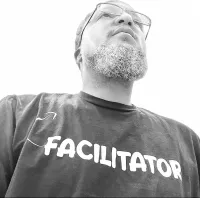

Your Success, Our Priority
Browse our articles below
Make sure to request our FREE Role Player Guide to Recruiting
Click the more stories button for additional articles

Dartmouth NLRB Decision
The Dartmouth NLRB Decision
Is the NCAA Facing a Game-Changer?
The conversation around classifying student-athletes as employees is heating up, and it’s not just a legal technicality—it’s a potential seismic shift for college sports. This move could reshape the landscape, raising questions that demand clear-eyed analysis and decisive action.
Academic Mission at the Crossroads
Colleges exist to educate, and student-athletes are, by definition, students. If they become employees, the academic focus risks dilution. The classroom could take a back seat to the demands of a job, challenging the very mission that higher education stands for. This isn’t just a philosophical debate; it’s a practical concern for every institution that values learning as its core product.
Amateurism Under Pressure
Amateurism has long set college sports apart from the pros. Paying student-athletes as employees blurs that line, potentially erasing the unique identity of collegiate athletics. The ripple effect could reach everything from eligibility rules to the spirit of competition, making it harder to distinguish college games from professional leagues.
Title IX: A Legal Tightrope
Title IX compliance isn’t optional. If student-athletes are employees, schools must ensure fair treatment and compensation across all sports and genders. This is a logistical and legal challenge, especially for programs with limited resources. Equity isn’t just a buzzword—it’s a federal mandate, and the stakes are high for getting it right.
Financial Realities Hit Home
Turning student-athletes into employees isn’t just a policy change; it’s a budget overhaul. Salaries, benefits, taxes, and labor law compliance could stretch athletic department finances to the breaking point. For many schools, this could mean tough choices about which programs survive and which get cut.
Recruiting and the Competitive Landscape
Employment status could turbocharge recruiting battles. Schools with deeper pockets might offer more attractive compensation packages, widening the gap between powerhouse programs and everyone else. The result? A recruiting arms race that could upend the competitive balance college sports have worked hard to maintain.
Student-Athlete Well-Being in the Spotlight
Student-athletes already juggle intense schedules. Adding employee responsibilities could further blur the line between education and work, putting their academic progress and personal well-being at risk. The pressure to perform—on the field and in the classroom—could reach unsustainable levels.
Key Takeaway
The push to classify student-athletes as employees is more than a headline—it’s a fundamental challenge to the values and operations of college sports. Every stakeholder, from administrators to athletes, needs to understand the stakes and prepare for the potential fallout. The future of college athletics may depend on how these questions are answered.
Resources & Community
🎯
Follow Facilitate The Process on Facebook
https://www.facebook.com/facilitatetheprocess/
🌐
Join Our Recruiting Community
🔗
Get Started Today

